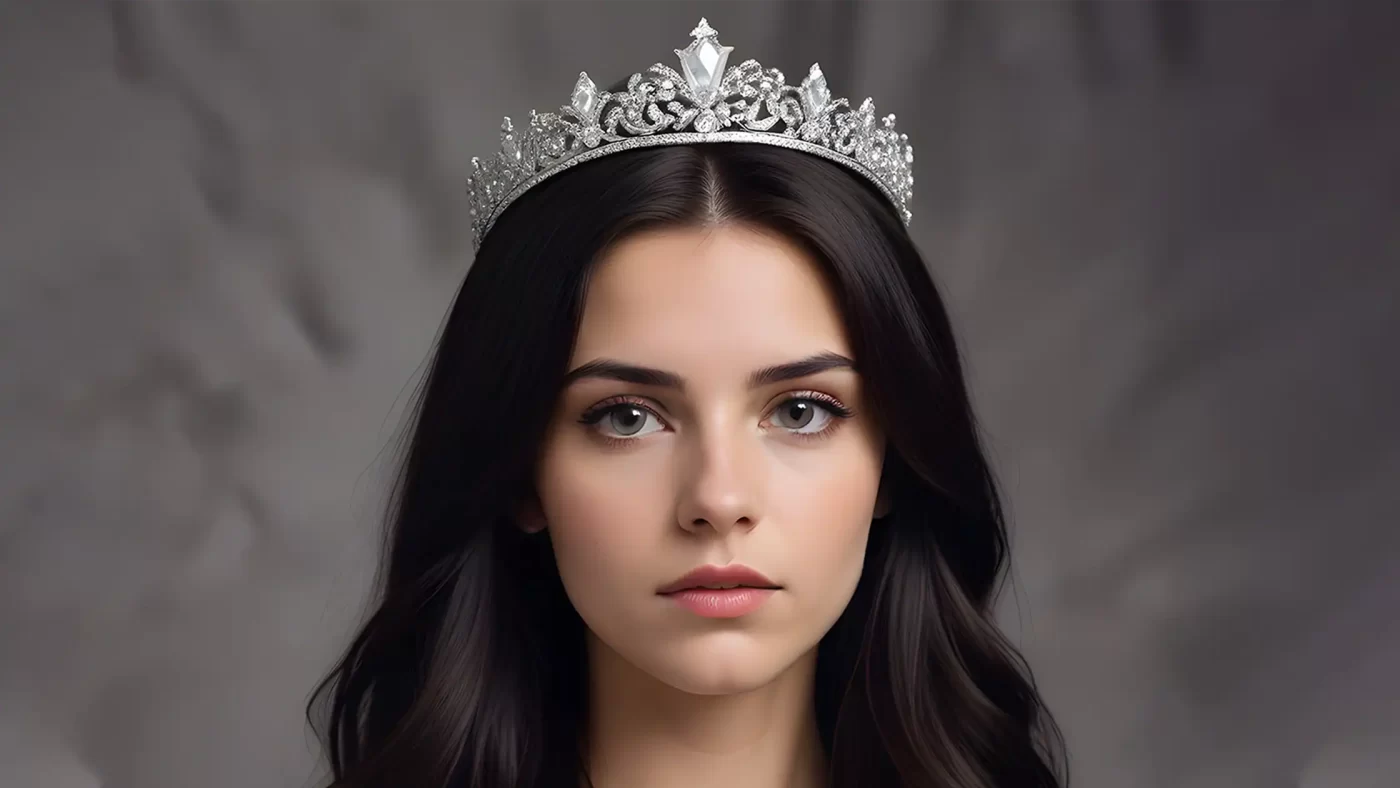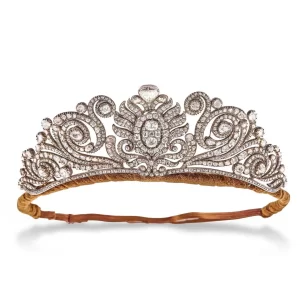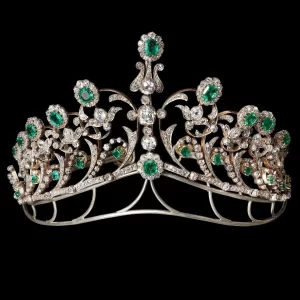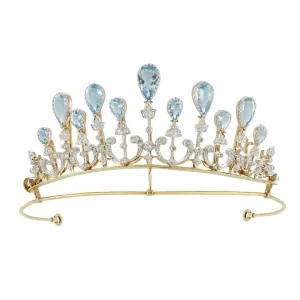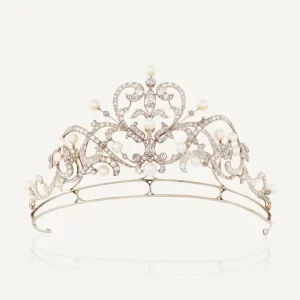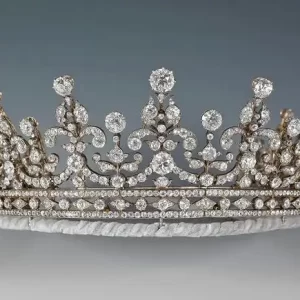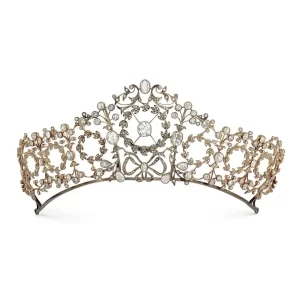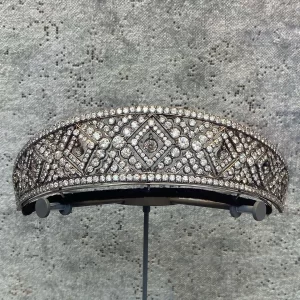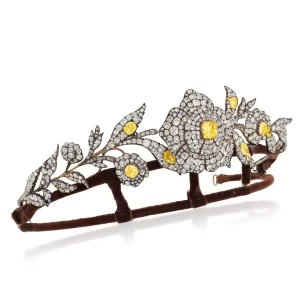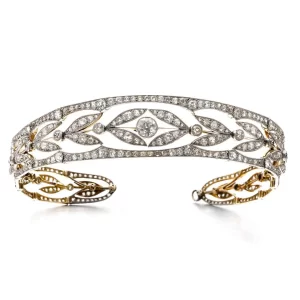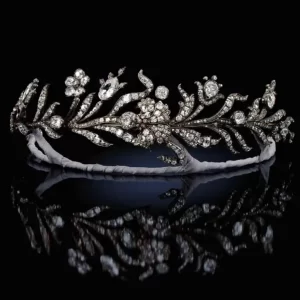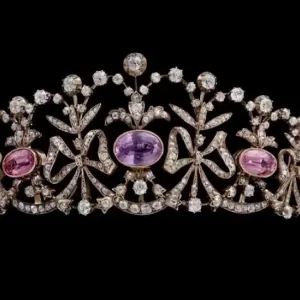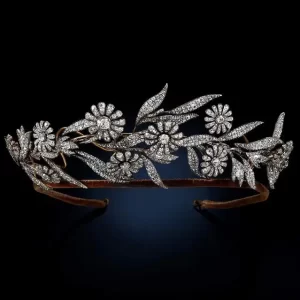Costozon
The Cultural Significance of Sterling Silver Crowns Around the World
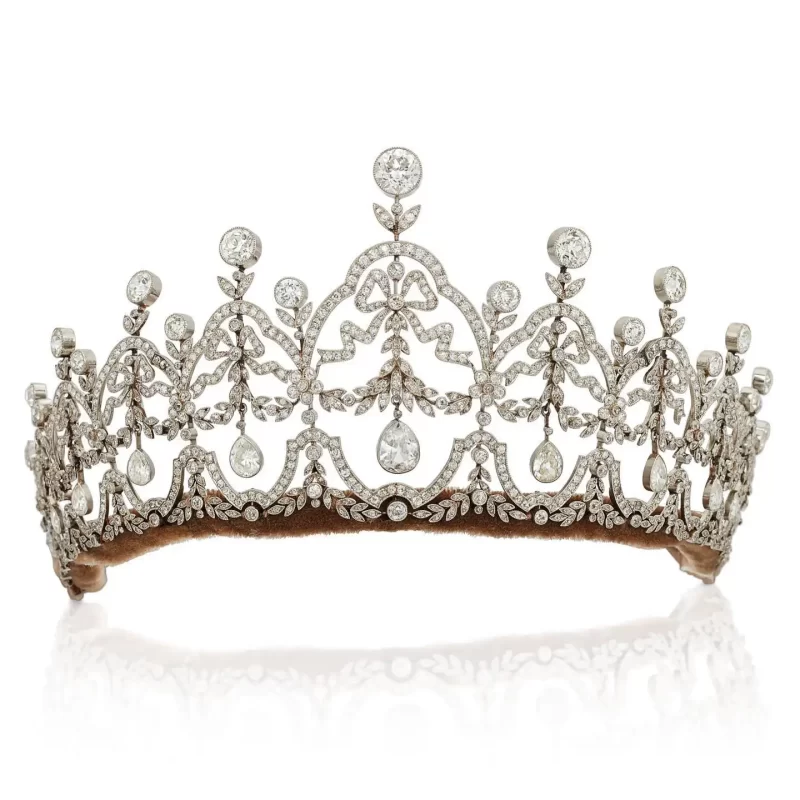
A. Brief History of Sterling Silver Crowns
Sterling silver crowns hold a rich and diverse history that transcends borders and spans centuries. Originating from ancient civilizations, these majestic adornments were initially reserved for royalty, symbolizing power, authority, and divine right. Dating back to ancient Egypt and Greece, where pharaohs and gods alike adorned themselves with intricate silver crowns, these regal accessories evolved over time, becoming emblematic of leadership and sovereignty across cultures. In medieval Europe, sterling silver crowns reached the pinnacle of their cultural significance, adorning kings and queens during coronation ceremonies, solidifying their divine connection to the ruling class. Today, while the context may have shifted, the allure of sterling silver crowns endures, representing a blend of tradition, craftsmanship, and timeless elegance cherished by cultures worldwide.
B. Symbolism of Crowns in Different Cultures
Crowns have served as powerful symbols across diverse cultures throughout history, each imbued with unique meanings and significance. In ancient Egypt, the crown represented the pharaoh’s divine authority, connecting them to the gods and asserting their status as rulers of the land. The iconic pschent, a combination of the white crown of Upper Egypt and the red crown of Lower Egypt, symbolized the unification of the country under one ruler.
In medieval Europe, crowns were central to the concept of monarchy, representing the divine right of kings and queens to rule. The crown was often depicted as a halo-like symbol, signifying the monarch’s role as God’s chosen representative on Earth. Coronation ceremonies were elaborate affairs, with the crowning moment marking the official ascent to power and the beginning of a monarch’s reign.
In Japan, the imperial chrysanthemum crown holds deep cultural significance, symbolizing the emperor’s divine ancestry and connection to the sun goddess Amaterasu. The intricate design of the crown features sixteen chrysanthemum petals, representing longevity and prosperity, and is a potent symbol of imperial authority and tradition.
In indigenous cultures around the world, crowns and headdresses hold symbolic importance in rituals, ceremonies, and storytelling. They often represent leadership, spiritual connection, and cultural identity, passed down through generations as symbols of heritage and honor.
Overall, crowns serve as potent symbols of power, authority, and cultural identity, transcending geographical and historical boundaries to resonate with people around the world.
C. Importance of Sterling Silver in Crown Making
The importance of sterling silver in crown making lies not only in its aesthetic appeal but also in its practicality and symbolic value. Sterling silver, an alloy composed of 92.5% silver and 7.5% other metals (usually copper), is renowned for its durability, versatility, and affordability compared to other precious metals like gold or platinum.
Firstly, sterling silver provides an elegant and lustrous finish, making it an ideal choice for crafting intricate crown designs. Its malleability allows artisans to create detailed engravings, filigree work, and gemstone settings, adding to the crown’s overall splendor.
Moreover, sterling silver’s durability ensures that Costozon’s crowns are not only visually stunning but also long-lasting. This is crucial, especially for crowns intended for ceremonial or symbolic purposes, where durability and longevity are paramount.
Additionally, sterling silver offers a more cost-effective option compared to gold or platinum, allowing Costozon to create high-quality crowns without compromising on craftsmanship or beauty. This affordability makes sterling silver crowns accessible to a wider range of customers, including individuals and organizations seeking regal accessories for various occasions.
Symbolically, sterling silver crowns retain the prestige and symbolism associated with royalty and nobility, despite being crafted from a more accessible material. They evoke notions of elegance, sophistication, and authority, making them suitable for ceremonial events, pageantry, and cultural celebrations.
In summary, the importance of sterling silver in crown making lies in its combination of aesthetic appeal, durability, affordability, and symbolic value, ensuring that each crown crafted embodies the timeless allure of royalty while remaining accessible to a diverse clientele.
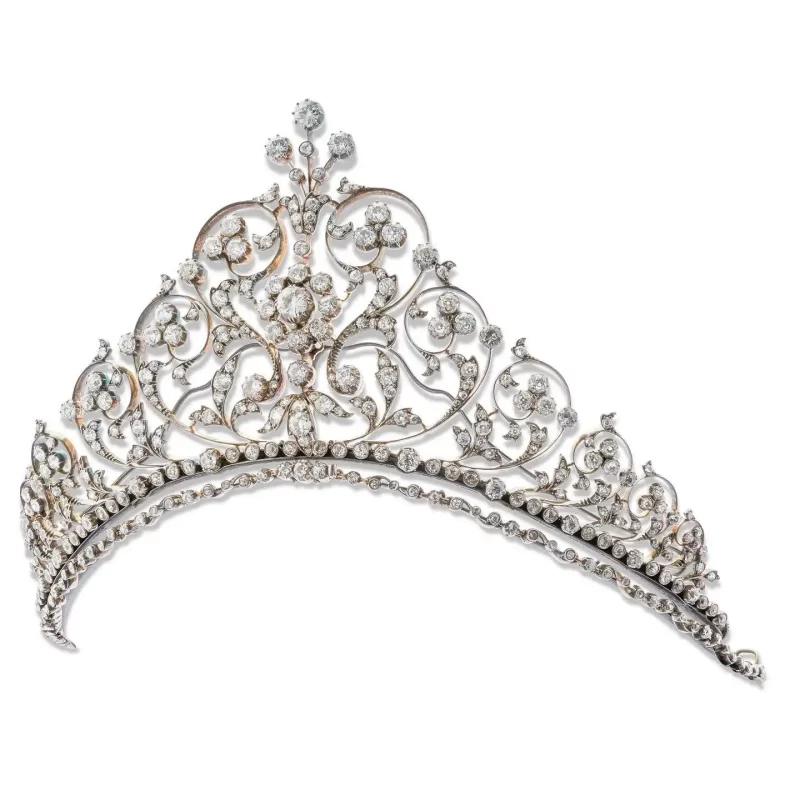
II. Sterling Silver Crowns in European Culture
A. Royal Crowns of European Monarchies
The royal crowns of European monarchies are not only stunning pieces of craftsmanship but also symbols deeply rooted in history, tradition, and cultural identity. Each crown holds its own unique story, reflecting the dynastic lineage, religious beliefs, and political landscape of the monarchy it represents. Here are some iconic examples:
The Imperial State Crown (United Kingdom): Perhaps one of the most recognizable royal crowns globally, the Imperial State Crown is worn by British monarchs during the State Opening of Parliament. It features an array of precious gemstones, including the famous Cullinan II diamond and the Black Prince’s Ruby. Symbolically, it represents the authority of the British monarchy and is a potent emblem of the United Kingdom’s rich heritage.
The Crown of Saint Wenceslas (Czech Republic): This crown, also known as the Bohemian Crown Jewels, is the symbol of the Czech monarchy. It dates back to the 14th century and is adorned with sapphires, rubies, emeralds, and pearls. The crown’s name pays homage to Saint Wenceslas, the patron saint of Bohemia, and it serves as a reminder of the country’s religious and cultural history.
The Crown of Saint Stephen (Hungary): Also called the Holy Crown of Hungary, this ancient crown has been a symbol of Hungarian sovereignty for over a millennium. It is a unique piece, crafted from pure gold and adorned with pearls, rubies, and sapphires. Legend has it that the crown has miraculous powers, and its significance extends far beyond mere material value, embodying the spirit of the Hungarian nation.
The Crown of Christian V (Denmark): This crown, created in 1670, is one of Denmark’s most important regalia. Made of gold and decorated with diamonds, emeralds, and rubies, it symbolizes the authority of the Danish monarchy. The crown’s design reflects the baroque aesthetic of the era and serves as a tangible link to Denmark’s royal history.
The Crown of the Netherlands: The Dutch royal family’s crown, while not as ornate as some others, is a symbol of constitutional monarchy in the Netherlands. It is a relatively simple gold crown adorned with pearls and topped with a cross. The crown represents the continuity of the Dutch monarchy and the unity of the country under the House of Orange-Nassau.
These are just a few examples of the rich tapestry of royal crowns found across Europe, each with its own unique design, symbolism, and historical significance. Collectively, they stand as tangible reminders of the continent’s regal heritage and enduring traditions.
B. Sterling Silver Crowns in Religious Ceremonies
Sterling silver crowns play a significant role in various religious ceremonies, symbolizing spiritual authority, divine blessing, and the sacred union between individuals or communities. Here are a few examples of how sterling silver crowns are utilized in religious contexts:
Orthodox Christian Weddings: In Orthodox Christian traditions, such as those found in the Eastern Orthodox Church, sterling silver crowns, known as “stefana” or “crowns of glory,” are a central element of the wedding ceremony. The crowns are intricately crafted and connected by a ribbon, symbolizing the unity and bond between the bride and groom. During the ceremony, the crowns are placed on the heads of the couple by the priest, signifying their commitment to each other and to God. The crowns are often adorned with symbolic motifs, such as crosses or floral patterns, representing the spiritual significance of the marriage union.
Religious Processions and Festivals: In some religious traditions, sterling silver crowns are used in processions and festivals to honor saints, religious figures, or divine beings. These crowns may be displayed on statues or icons of the revered figures as part of ceremonial rituals. The use of sterling silver underscores the reverence and respect accorded to these religious symbols, enhancing the sacred atmosphere of the event.
Baptisms and Christenings: In certain Christian denominations, sterling silver crowns may be used in baptismal ceremonies to symbolize the spiritual rebirth and adoption into the Christian faith. During the baptismal rite, the crowns may be placed on the head of the newly baptized individual, signifying their status as a beloved child of God and a member of the Christian community. The use of sterling silver crowns adds a sense of solemnity and significance to the sacramental occasion.
Religious Artifacts and Relics: Sterling silver crowns are also used to adorn religious artifacts, such as sacred texts, relics, or ceremonial vessels, in various religious traditions. These crowns serve as ornamental embellishments, reflecting the importance and sanctity of the objects they adorn. The craftsmanship and beauty of sterling silver crowns enhance the aesthetic appeal of religious artifacts while reinforcing their spiritual significance.
Overall, sterling silver crowns hold a special place in religious ceremonies, symbolizing spiritual devotion, divine grace, and the enduring bonds of faith and community. Whether used in weddings, processions, baptisms, or as religious artifacts, these crowns serve as tangible expressions of reverence and piety in diverse religious contexts.
C. Influence of European Crowns on Modern Jewelry Trends
The influence of European crowns on modern jewelry trends is undeniable, as these historical symbols of royalty continue to inspire contemporary designs and motifs. Here are some ways in which European crowns have impacted modern jewelry trends:
Regal Aesthetics: The opulent and intricate designs of European crowns, with their elaborate filigree work, gemstone settings, and ornate detailing, have inspired modern jewelry designers to create pieces that evoke a sense of regal elegance. Crowns often feature motifs such as fleur-de-lis, crosses, and floral patterns, which have become iconic elements in modern jewelry design, adding a touch of royal sophistication to rings, necklaces, and earrings.
Symbolism of Power and Authority: European crowns have long been associated with power, authority, and nobility, and these symbolic connotations continue to resonate in modern jewelry trends. Crown motifs are frequently used to convey a sense of strength, confidence, and self-assurance, making them popular choices for statement pieces and personalized jewelry that exudes a sense of empowerment.
Vintage Revival: The resurgence of vintage and antique jewelry styles in recent years has led to a renewed interest in European crown designs from past eras. Vintage-inspired crowns, reminiscent of those worn by monarchs and nobles centuries ago, have become sought-after pieces among collectors and fashion enthusiasts alike, offering a timeless allure and a connection to history.
Bridal Couture: European crowns, particularly those associated with royal weddings and coronations, have influenced bridal jewelry trends, inspiring designs that capture the romance and grandeur of these ceremonial occasions. Crown-inspired tiaras, headpieces, and hair accessories have become popular choices for brides seeking to add a touch of regal sophistication to their wedding attire, symbolizing love, devotion, and the promise of a fairy-tale romance.
Cultural Heritage: European crowns are not only symbols of royalty but also embodiments of cultural heritage and tradition. Modern jewelry designers often draw inspiration from the rich history and craftsmanship of European crowns, incorporating elements of their designs into contemporary pieces that pay homage to the past while embracing the present. This fusion of old-world charm and modern sensibility creates jewelry that is both timeless and relevant, appealing to a diverse range of tastes and styles.
In summary, the influence of European crowns on modern jewelry trends is multifaceted, encompassing elements of aesthetics, symbolism, history, and cultural heritage. Whether evoking the splendor of royal courts or capturing the romance of fairy-tale weddings, crown-inspired jewelry continues to captivate and inspire, leaving a lasting impression on the world of fashion and design.

III. Sterling Silver Crowns in African Traditions
In various African cultures and traditions, sterling silver crowns hold profound significance, serving as symbols of authority, status, and cultural heritage. Here are some ways in which sterling silver crowns are used in African traditions:
Royal Regalia: In many African kingdoms and chiefdoms, sterling silver crowns are worn by rulers and royalty as symbols of their authority and divine right to rule. These crowns are often intricately crafted and adorned with symbolic motifs that represent the lineage, history, and cultural identity of the ruling dynasty. They are worn on ceremonial occasions, such as coronations, royal weddings, and festivals, where they serve to reaffirm the monarch’s legitimacy and prestige.
Ceremonial Celebrations: Sterling silver crowns are also used in various ceremonial celebrations and rites of passage across Africa. For example, in some cultures, crowns are worn by individuals during initiation ceremonies or coming-of-age rituals to mark their transition into adulthood. These crowns may be passed down through generations as family heirlooms, carrying with them the wisdom, traditions, and blessings of ancestors.
Spiritual and Religious Practices: In certain African spiritual traditions, sterling silver crowns are used in rituals and ceremonies to honor deities, ancestors, or spiritual guardians. These crowns may be worn by priests, priestesses, or spiritual leaders during sacred ceremonies, such as offerings, blessings, or divination rituals. The crowns serve as conduits for divine energy and protection, embodying the spiritual authority and wisdom of the practitioner.
Cultural Festivals and Celebrations: Sterling silver crowns are often featured prominently in cultural festivals, masquerades, and celebrations across Africa. These festivals serve as occasions for communities to come together, celebrate their cultural heritage, and express their identity through art, music, and dance. Sterling silver crowns may be worn by performers, dancers, or participants as part of elaborate costumes or ceremonial attire, adding to the spectacle and splendor of the event.
Overall, sterling silver crowns hold deep cultural and spiritual significance in African traditions, representing a connection to ancestry, tradition, and the divine. Whether worn by royalty, used in ceremonies, or featured in cultural celebrations, these crowns serve as enduring symbols of African identity, pride, and resilience.
A. The Role of Crowns in African Tribal Culture
In African tribal culture, crowns hold significant importance as symbols of power, prestige, and cultural identity. Here are several key roles crowns play in African tribal culture:
Symbol of Leadership: Crowns are often worn by tribal chiefs, kings, or queens as symbols of their authority and leadership within the community. These crowns may be elaborately crafted and adorned with symbolic motifs that represent the lineage, wisdom, and divine right of the ruler to govern. By wearing the crown, tribal leaders assert their legitimacy and sovereignty, serving as custodians of tradition and guardians of the tribe’s welfare.
Connection to Ancestry: Crowns in African tribal culture are imbued with ancestral significance, serving as tangible links to the past and repositories of collective memory. Many crowns are passed down through generations within royal lineages, carrying with them the blessings, wisdom, and ancestral spirits of past rulers. By wearing the crown, tribal leaders honor their ancestors and affirm their connection to the lineage, reinforcing the continuity of tradition and heritage.
Ceremonial Rituals: Crowns play a central role in various ceremonial rituals and rites of passage within African tribal communities. For example, crowns may be worn during initiation ceremonies, coming-of-age rituals, or coronation ceremonies, signifying the transition from one stage of life to another. These ceremonies often involve elaborate rituals, prayers, and blessings, with the crown serving as a sacred symbol of spiritual empowerment and transformation.
Spiritual Protection: In some African tribal cultures, crowns are believed to possess spiritual powers and protective qualities, serving as talismans against evil spirits, illness, or misfortune. Crowns may be blessed by tribal elders or spiritual leaders, infused with prayers and incantations, and worn as a form of divine protection during times of adversity or spiritual warfare. The intricate designs and embellishments of the crown may also incorporate symbolic elements believed to ward off malevolent forces and invoke divine favor.
Expression of Identity: Crowns in African tribal culture are also expressions of cultural identity, pride, and artistic creativity. Each tribe may have its own unique style of crown, reflecting the distinct traditions, beliefs, and aesthetic preferences of the community. Crowns may be adorned with feathers, beads, shells, or animal motifs, reflecting the natural environment and cultural symbolism of the tribe. Through the creation and wearing of crowns, tribal members celebrate their heritage, assert their identity, and affirm their place within the larger tapestry of African culture.
Overall, crowns play a multifaceted role in African tribal culture, serving as symbols of leadership, ancestry, spirituality, and identity. They embody the rich tapestry of tradition, symbolism, and craftsmanship that defines the cultural landscape of the African continent, serving as enduring symbols of pride, resilience, and cultural continuity within tribal communities.
B. Symbolism of Sterling Silver in African Crowns
In African crowns, the use of sterling silver carries profound symbolism that extends beyond mere aesthetics. Here are some symbolic meanings associated with sterling silver in African crowns:
Purity and Integrity: Sterling silver is revered for its purity and durability. In African culture, these qualities are often associated with moral integrity, honesty, and righteousness. As such, the use of sterling silver in crowns symbolizes the moral uprightness and integrity expected of leaders who wear them. It reflects a commitment to upholding traditional values, serving the community with honor, and leading with integrity.
Spiritual Significance: Silver has long been regarded as a sacred metal with spiritual properties in many African societies. It is often associated with the moon, which holds symbolic significance in African cosmology as a source of divine wisdom, intuition, and feminine energy. Sterling silver crowns may therefore be seen as conduits for spiritual blessings, protection, and divine guidance. They symbolize the wearer’s connection to the spiritual realm and their role as intermediaries between the earthly and divine realms.
Status and Prestige: In African societies, the wearing of silver jewelry, including crowns, has historically been reserved for individuals of high status, such as chiefs, kings, and spiritual leaders. Sterling silver crowns serve as symbols of prestige, honor, and nobility, signifying the wearer’s elevated social standing and authority within the community. They are tangible expressions of power and privilege, commanding respect and admiration from others.
Cultural Heritage: Sterling silver crowns are also embodiments of cultural heritage and tradition in African societies. The craftsmanship and design of these crowns often reflect specific cultural motifs, symbols, and artistic techniques that have been passed down through generations. By wearing sterling silver crowns, tribal leaders honor their cultural heritage, affirming their identity and lineage within the broader tapestry of African culture. The crowns serve as tangible reminders of ancestral wisdom, resilience, and the enduring spirit of the community.
Unity and Community: Sterling silver crowns may also symbolize unity and community solidarity within African societies. They often serve as rallying points for collective identity and pride, bringing people together to celebrate shared values, traditions, and achievements. The act of crowning a leader with sterling silver signifies the community’s support and endorsement, uniting individuals under a common vision and purpose.
Overall, the symbolism of sterling silver in African crowns encompasses notions of purity, spirituality, status, heritage, and community. These crowns serve as powerful symbols of leadership, cultural identity, and collective aspirations, embodying the rich tapestry of African history, tradition, and symbolism.
C. Preservation of Traditional Crown Making Techniques
Preserving traditional crown-making techniques is essential for safeguarding cultural heritage, maintaining artisanal skills, and ensuring the continuity of craftsmanship passed down through generations. Here are some strategies for preserving these techniques:
Documentation and Research: Conducting thorough documentation and research on traditional crown-making techniques is crucial for understanding their historical context, materials used, and craftsmanship processes involved. This knowledge forms the foundation for preservation efforts and provides valuable insights into the cultural significance of crowns within specific communities.
Apprenticeships and Mentorship Programs: Establishing apprenticeship and mentorship programs enables experienced artisans to pass on their knowledge and skills to the next generation. Young apprentices learn traditional techniques firsthand, gaining practical experience under the guidance of master craftsmen. These programs help preserve traditional craftsmanship while fostering intergenerational exchange and collaboration.
Community Engagement and Participation: Engaging local communities in the preservation of traditional crown-making techniques fosters a sense of ownership and pride in cultural heritage. Community members can contribute valuable insights, oral histories, and practical skills that complement formal preservation efforts. Involving community elders, artisans, and cultural practitioners in workshops, demonstrations, and skill-sharing activities strengthens cultural bonds and promotes the transmission of traditional knowledge.
Revitalization Projects: Supporting revitalization projects aimed at reviving and sustaining traditional crown-making techniques helps ensure their continued practice and relevance. These projects may involve collaboration between artisans, cultural organizations, academic institutions, and government agencies to provide resources, training, and infrastructure needed to preserve and promote traditional craftsmanship. Funding initiatives, grants, and scholarships can also incentivize artisans to continue practicing their craft and pass on their skills to future generations.
Promotion and Market Access: Promoting traditional crown-making techniques through exhibitions, demonstrations, and cultural events raises awareness about their importance and encourages public appreciation and support. Creating market access opportunities for artisans to showcase and sell their handmade crowns helps sustain livelihoods and incentivizes continued practice of traditional techniques. Collaborating with designers, retailers, and cultural institutions to incorporate traditional crown designs into contemporary fashion and accessories expands market reach and preserves cultural heritage in innovative ways.
By employing these strategies and fostering collaboration among stakeholders, traditional crown-making techniques can be preserved, celebrated, and passed on to future generations, ensuring the continuity of cultural heritage for years to come.
IV. Sterling Silver Crowns in Asian Cultures
A. Significance of Crowns in Asian Royalty
In Asian royalty, crowns hold profound significance as symbols of power, authority, and divine mandate. Here are some key aspects of the significance of crowns in Asian royalty:
Divine Authority: In many Asian cultures, monarchs are regarded as divine or semi-divine figures with a sacred mandate to rule. Crowns serve as tangible manifestations of this divine authority, symbolizing the monarch’s connection to the heavens and their role as intermediaries between the earthly realm and the divine. The act of coronation, where the crown is placed upon the monarch’s head, represents a sacred ritual that legitimizes their rule and invests them with divine blessing.
Dynastic Legitimacy: Crowns in Asian royalty often carry the emblems and insignia of the ruling dynasty, reinforcing the monarch’s lineage and legitimacy. These symbols may include family crests, ancestral motifs, or mythical creatures that represent the dynasty’s founding principles, values, and achievements. By wearing the crown, the monarch asserts their rightful place within the dynastic succession and affirms their commitment to upholding tradition and continuity.
Cultural Identity: Crowns in Asian royalty are imbued with cultural symbolism and aesthetic traditions that reflect the unique heritage and identity of each dynasty or kingdom. The design, materials, and craftsmanship of the crown may incorporate cultural motifs, artistic styles, and historical references that resonate with the cultural heritage of the monarch’s realm. Crowns serve as iconic symbols of national identity, pride, and sovereignty, evoking a sense of belonging and unity among the people.
Ritual and Ceremony: Asian royalty often participates in elaborate coronation ceremonies, state rituals, and ceremonial occasions where crowns play a central role. These rituals are steeped in tradition, symbolism, and protocol, reflecting the monarch’s status as the embodiment of the state and the custodian of national unity. Crowns are worn with reverence and solemnity, symbolizing the monarch’s solemn duty to govern with wisdom, justice, and compassion.
Status and Prestige: Crowns in Asian royalty are symbols of high status, prestige, and nobility, reserved for monarchs, princes, and other members of the royal family. The design and embellishments of the crown may vary depending on the wearer’s rank and position within the royal hierarchy, with more ornate crowns reserved for reigning monarchs and simpler crowns for members of the royal court. By wearing the crown, the monarch and royal family project an aura of dignity, authority, and majesty that commands respect and admiration from their subjects.
Overall, crowns play a multifaceted role in Asian royalty, serving as symbols of divine authority, dynastic legitimacy, cultural identity, ritual significance, and status. They embody the rich tapestry of tradition, symbolism, and ceremonial protocol that defines the royal institutions of Asia, reinforcing the monarchy’s enduring place within the cultural, historical, and social fabric of the region.
B. Intricate Designs of Sterling Silver Crowns in Asia
The intricate designs of sterling silver crowns in Asia reflect a rich tapestry of cultural heritage, artistic expression, and craftsmanship. Here are some key elements and motifs commonly found in the design of sterling silver crowns across Asia:
Symbolism and Meaning: Sterling silver crowns in Asia are often adorned with symbolic motifs and emblems that carry profound cultural, religious, or historical significance. These symbols may include auspicious animals, mythical creatures, celestial bodies, or religious icons, each imbued with specific meanings and associations that resonate with the cultural beliefs and values of the region.
Filigree and Embellishments: Sterling silver crowns in Asia are renowned for their exquisite filigree work and intricate embellishments, characterized by delicate patterns, fine details, and meticulous craftsmanship. Artisans use techniques such as wire twisting, soldering, and granulation to create intricate designs that enhance the beauty and elegance of the crown. These ornamental details may include floral motifs, geometric patterns, or elaborate scrollwork, reflecting the aesthetic sensibilities and artistic traditions of the region.
Gemstone Settings: Sterling silver crowns in Asia often feature gemstone settings that add color, brilliance, and dimension to the design. Precious and semi-precious gemstones such as rubies, emeralds, sapphires, and pearls are meticulously set into the crown to create striking focal points and enhance its regal allure. Gemstones may be arranged in geometric patterns, floral arrangements, or symbolic configurations that convey specific meanings and associations within the cultural context.
Cultural Influences: The design of sterling silver crowns in Asia is influenced by a diverse array of cultural influences, including indigenous traditions, religious beliefs, and historical legacies. For example, crowns in South Asia may feature motifs inspired by Hindu mythology, such as lotus flowers, peacocks, or divine deities, while crowns in East Asia may incorporate elements of Confucianism, Buddhism, or Taoism, such as dragons, phoenixes, or yin-yang symbols.
Royal Crests and Insignia: Sterling silver crowns in Asia often bear royal crests, insignia, or family symbols that denote the wearer’s status, lineage, or dynastic affiliation. These emblems may be engraved, embossed, or appliquéd onto the surface of the crown, serving as distinctive markers of royal authority and prestige. Royal crests may incorporate heraldic motifs, animal totems, or stylized initials that represent the monarch’s identity and heritage.
Overall, the intricate designs of sterling silver crowns in Asia are masterpieces of artistry, craftsmanship, and cultural expression, embodying the rich heritage and timeless elegance of the region. Each crown tells a story of tradition, symbolism, and royal splendor, serving as a tangible symbol of cultural pride, regal authority, and historical legacy in Asia and beyond.
C. Evolution of Asian Crown Styles over Centuries
The evolution of Asian crown styles over centuries is a fascinating journey that reflects changes in political, cultural, and artistic trends across the region. Here’s a broad overview of the evolution of Asian crown styles:
Ancient Period: In ancient Asia, crowns were often simple and utilitarian, serving primarily as symbols of royal authority rather than elaborate pieces of regalia. Crowns from this period were typically made of materials such as gold, bronze, or jade, and featured minimalist designs with geometric shapes and symbolic motifs inspired by nature, mythology, and religious beliefs.
Classical Period: During the classical period, Asian crown styles became more elaborate and ornate, reflecting the growing sophistication of civilizations across the region. Crowns from this period were characterized by intricate filigree work, fine metalwork, and the use of precious gemstones to embellish the design. Influences from neighboring cultures and trade routes led to the incorporation of diverse artistic elements and motifs into crown styles.
Medieval Period: The medieval period saw the emergence of distinct regional styles in Asian crown design, influenced by the rise of powerful empires and dynasties. Crowns became symbols of imperial authority and divine mandate, with designs inspired by religious symbolism, imperial regalia, and courtly traditions. In East Asia, crowns often featured iconic motifs such as dragons, phoenixes, and lotus flowers, while in South Asia, crowns reflected Hindu and Buddhist influences with designs inspired by temple architecture and mythological tales.
Renaissance Period: The Renaissance period marked a golden age of artistic and cultural flourishing in Asia, with crowns becoming even more elaborate and symbolic. Crown styles from this period were characterized by intricate craftsmanship, intricate detailing, and the use of innovative techniques such as cloisonné enamel, inlay work, and repoussé metalwork. Crowns became status symbols worn by rulers, nobles, and religious leaders to signify their wealth, power, and divine right to rule.
Modern Period: In the modern period, Asian crown styles have evolved to reflect changing political landscapes, cultural values, and global influences. While traditional crown-making techniques and motifs continue to be preserved and celebrated, contemporary crown designs often incorporate elements of innovation, fusion, and adaptation to meet the demands of a modern world. Crowns may combine traditional craftsmanship with modern materials, technologies, and design aesthetics to create pieces that resonate with contemporary audiences while honoring the legacy of the past.
Overall, the evolution of Asian crown styles over centuries is a testament to the region’s rich cultural heritage, artistic innovation, and enduring legacy of craftsmanship. From ancient symbols of royal authority to modern expressions of cultural pride, Asian crowns continue to captivate and inspire, serving as timeless symbols of regal splendor and historical legacy.

V. Sterling Silver Crowns in Indigenous Peoples’ Heritage
A. Cultural Importance of Crowns in Indigenous Communities
In indigenous communities around the world, crowns hold significant cultural importance, serving as symbols of leadership, spirituality, and cultural identity. Here are several aspects of the cultural significance of crowns in indigenous communities:
Leadership and Authority: Crowns are often worn by tribal chiefs, elders, or spiritual leaders as symbols of their authority and wisdom within the community. These crowns may be crafted from natural materials such as feathers, shells, or animal bones, and adorned with symbolic motifs that represent the leader’s role as a steward of tradition, justice, and community welfare. By wearing the crown, tribal leaders assert their legitimacy and responsibility to govern with integrity and compassion, guiding their people in accordance with tribal customs and values.
Spiritual Connection: Crowns in indigenous communities are imbued with spiritual significance, representing a connection to ancestral spirits, deities, or natural forces. Many indigenous cultures believe that crowns possess sacred powers and protective qualities, serving as conduits for divine blessings, healing energies, and spiritual guidance. Crowns may be worn during sacred rituals, ceremonies, or ceremonies to invoke the presence of the divine and seek blessings for the community’s well-being.
Cultural Identity and Heritage: Crowns in indigenous communities are expressions of cultural identity, heritage, and resilience, embodying the traditions, values, and artistic expressions of the tribe. Each crown may incorporate unique designs, materials, and techniques that reflect the tribe’s cultural heritage, environmental surroundings, and historical experiences. Crowns serve as tangible symbols of indigenous pride and solidarity, fostering a sense of belonging and continuity among tribal members across generations.
Rites of Passage and Ceremony: Crowns play a central role in various rites of passage and ceremonial occasions within indigenous communities, marking significant milestones in an individual’s life journey. For example, crowns may be worn during coming-of-age rituals, initiations, weddings, or funerals to signify transitions in social status, roles, or responsibilities within the community. These ceremonial crowns serve as tangible reminders of the individual’s connection to their cultural roots and the collective wisdom of their ancestors.
Artistic Expression and Innovation: Crowns in indigenous communities are works of art that showcase the creativity, craftsmanship, and ingenuity of tribal artisans. Traditional crown-making techniques may be passed down through generations, with each artisan adding their unique flair and personal touch to the design. Crowns may feature intricate beadwork, weaving, carving, or painting techniques that reflect the natural beauty, cultural symbolism, and artistic traditions of the tribe.
Overall, the cultural importance of crowns in indigenous communities transcends mere adornment, serving as powerful symbols of leadership, spirituality, cultural identity, and artistic expression. They embody the resilience, wisdom, and heritage of indigenous peoples, preserving traditions and values that have sustained communities for centuries.
B. Unique Characteristics of Sterling Silver Crowns in Indigenous Cultures
Sterling silver crowns in indigenous cultures possess unique characteristics that distinguish them from crowns in other contexts. Here are some notable features:
Incorporation of Natural Materials: Indigenous sterling silver crowns often incorporate natural materials such as feathers, shells, bones, and semi-precious stones alongside sterling silver. These materials hold cultural significance and may symbolize connections to the land, animals, and spirits revered by the community. The combination of sterling silver with natural elements creates a harmonious blend of tradition, craftsmanship, and symbolism in indigenous crown design.
Symbolic Motifs and Patterns: Sterling silver crowns in indigenous cultures feature symbolic motifs and patterns that hold deep cultural meaning and spiritual significance. These motifs may include geometric designs, animal totems, ancestral symbols, or representations of natural elements such as sun, moon, and stars. Each motif carries specific meanings related to tribal identity, cosmology, mythology, and historical experiences, serving as visual narratives of the tribe’s cultural heritage and worldview.
Artistic Embellishments: Indigenous sterling silver crowns are renowned for their artistic embellishments and intricate detailing, reflecting the skill, creativity, and ingenuity of tribal artisans. Crowns may feature hand-engraved patterns, embossed textures, or hammered finishes that add depth and dimension to the design. Artisans often employ traditional metalworking techniques such as repoussé, chasing, and filigree to create ornate decorations that capture the eye and evoke a sense of reverence and admiration.
Cultural Adaptation and Innovation: While rooted in traditional craftsmanship, indigenous sterling silver crowns also exhibit adaptations and innovations that reflect contemporary influences and artistic expressions. Artisans may experiment with new materials, techniques, and design elements to create crowns that resonate with modern sensibilities while honoring tribal traditions. This fusion of old and new, tradition and innovation, enriches indigenous crown design, ensuring its relevance and vitality in a rapidly changing world.
Community Collaboration and Meaning: Indigenous sterling silver crowns are often created through collaborative efforts within the community, involving multiple artisans, elders, and cultural practitioners. The process of making a crown may entail communal gatherings, ceremonies, and rituals that imbue the object with collective meaning and significance. Crowns may be blessed, consecrated, or adorned with sacred offerings as part of these ceremonies, reinforcing their spiritual potency and cultural value within the community.
Overall, the unique characteristics of sterling silver crowns in indigenous cultures reflect a deep reverence for tradition, a profound connection to the natural world, and a commitment to artistic excellence and cultural resilience. These crowns serve as powerful symbols of indigenous identity, pride, and sovereignty, embodying the rich heritage and enduring spirit of indigenous peoples around the world.
C. Incorporation of Indigenous Crown Designs in Modern Fashion Trends
The incorporation of indigenous crown designs into modern fashion trends represents a convergence of tradition, innovation, and cultural exchange. Here are some ways in which indigenous crown designs have influenced and been integrated into contemporary fashion:
Fashion Runways and Design Collections: Fashion designers around the world draw inspiration from indigenous crown designs, incorporating elements such as motifs, patterns, and materials into their collections. Indigenous crown designs may be featured prominently on the runway, reinterpreted in modern silhouettes, and styled with contemporary garments to create visually striking and culturally resonant ensembles. Designers often collaborate with indigenous artisans and communities to ensure authenticity and respect for cultural heritage.
Artisanal and Handcrafted Accessories: Indigenous crown designs are celebrated for their intricate craftsmanship and artistic expression, making them popular choices for artisanal and handcrafted accessories. Jewelry designers incorporate indigenous motifs and techniques into their designs, creating statement pieces such as tiaras, headbands, and hair combs that evoke the regal elegance and cultural richness of indigenous crowns. These accessories serve as wearable works of art that celebrate indigenous traditions and craftsmanship.
Cultural Fusion and Collaboration: Modern fashion trends often embrace cultural fusion and collaboration, blending indigenous crown designs with contemporary styles and aesthetics. Fashion brands may collaborate with indigenous artists, designers, and communities to create limited-edition collections that showcase indigenous craftsmanship and cultural heritage. These collaborations promote cross-cultural dialogue, mutual respect, and economic empowerment while raising awareness about indigenous cultures and traditions.
Celebrity Endorsement and Red Carpet Fashion: Indigenous crown designs have gained visibility and popularity through celebrity endorsement and red carpet fashion. Celebrities and influencers may wear indigenous-inspired crowns to high-profile events, awards ceremonies, or fashion galas, making bold fashion statements while paying homage to indigenous cultures and craftsmanship. These fashion choices spark conversations about cultural appropriation, representation, and the ethical sourcing of indigenous-inspired fashion.
Social Media and Global Influence: Social media platforms play a significant role in amplifying indigenous crown designs and influencing global fashion trends. Indigenous designers, artists, and cultural influencers share their creations and cultural heritage on social media, reaching a global audience and inspiring fashion enthusiasts around the world. Social media campaigns, hashtags, and collaborations raise awareness about indigenous issues, promote cultural diversity, and foster greater appreciation for indigenous fashion and design.
Overall, the incorporation of indigenous crown designs into modern fashion trends reflects a growing appreciation for cultural diversity, heritage preservation, and artistic expression in the fashion industry. By embracing indigenous craftsmanship and aesthetics, contemporary fashion celebrates the beauty, resilience, and creativity of indigenous cultures while fostering greater inclusivity and representation in the global fashion landscape.
VI. Conclusion
A. Recap of Sterling Silver Crowns’ Cultural Significance
Sterling silver crowns hold immense cultural significance across various contexts, embodying tradition, symbolism, and artistic expression. Here’s a recap of their cultural importance:
Symbol of Power and Authority: Sterling silver crowns symbolize power, authority, and legitimacy, whether worn by monarchs, tribal leaders, or spiritual figures. They represent divine right, sovereignty, and leadership within communities and societies.
Cultural Heritage: Crowns reflect cultural heritage, with designs often incorporating symbols, motifs, and techniques passed down through generations. They serve as tangible links to the past, preserving traditions, values, and artistic craftsmanship.
Spiritual Connection: Many cultures attribute spiritual significance to crowns, viewing them as conduits for divine blessings, protection, and guidance. Crowns may be used in religious ceremonies, rituals, and rites of passage to invoke spiritual energies and connect with higher realms.
Artistic Expression: Sterling silver crowns are works of art, showcasing the creativity, skill, and ingenuity of artisans. They feature intricate designs, embellishments, and craftsmanship that captivate the eye and evoke a sense of beauty, elegance, and cultural pride.
Identity and Pride: Crowns represent cultural identity and pride, serving as symbols of belonging, unity, and resilience within communities. They celebrate heritage, affirm traditions, and assert sovereignty, fostering a sense of collective identity and solidarity among people.
Overall, sterling silver crowns play a multifaceted role in cultural expression, embodying the rich tapestry of human history, tradition, and creativity. Whether worn by monarchs, tribal leaders, or in religious ceremonies, crowns resonate with deep cultural significance, transcending time and geography to connect us to our shared human heritage.
B. Influence of Crowns on Global Fashion and Jewelry Industries
the influence of crowns on the global fashion and jewelry industries is profound and multifaceted, spanning centuries of history, culture, and creativity. From the regal splendor of European monarchies to the spiritual significance of indigenous communities, crowns have captivated the imagination and inspired fashion trends around the world.
In the realm of fashion, crowns represent a timeless symbol of power, prestige, and elegance, influencing designers and stylists to incorporate regal motifs and opulent materials into their collections. Whether adorned by royalty on the red carpet or reimagined by avant-garde designers on the runway, crowns continue to captivate and inspire, symbolizing the intersection of tradition and innovation in contemporary fashion.
In the jewelry industry, crowns serve as iconic symbols of craftsmanship, heritage, and cultural identity. Sterling silver crowns, in particular, showcase the beauty and versatility of precious metals, inspiring artisans to create intricate designs that celebrate the richness of human creativity and expression. From heirloom tiaras worn by brides to statement necklaces adorned with crown motifs, crowns continue to reign supreme as coveted symbols of elegance and sophistication.
Beyond their aesthetic appeal, crowns hold deeper cultural significance, representing values of leadership, spirituality, and community identity. By embracing crown designs from diverse cultural traditions, the fashion and jewelry industries celebrate the beauty of global diversity and foster greater appreciation for the rich tapestry of human heritage.
In a world where trends come and go, crowns stand as enduring symbols of tradition, craftsmanship, and timeless elegance, reminding us of the power of culture to inspire, unite, and transform. As we continue to draw inspiration from the regal splendor of crowns, may we also honor the cultural legacies and artistic traditions that have shaped our world for generations to come.
C. Future Prospects of Sterling Silver Crown Artistry
the future prospects of sterling silver crown artistry are promising, marked by innovation, sustainability, and cultural collaboration. As artisans continue to push the boundaries of creativity and craftsmanship, sterling silver crowns will remain timeless symbols of elegance, sophistication, and cultural heritage for generations to come.
Technological advancements, such as 3D printing and computer-aided design, offer new avenues for experimentation and customization in crown artistry. Artisans can leverage these tools to create intricate designs, personalized creations, and sustainable practices that resonate with modern consumers.
Moreover, collaborations between artisans from diverse cultural backgrounds foster cross-cultural exchange and innovation, leading to the creation of unique fusion pieces that celebrate the beauty and diversity of global cultural heritage.
As consumer preferences evolve towards sustainability and authenticity, there is a growing demand for artisanal craftsmanship and handmade luxury. Sterling silver crown artisans who prioritize quality, authenticity, and attention to detail are well-positioned to thrive in this niche market, catering to discerning customers who value artistry and heritage.
In the ever-changing landscape of fashion and jewelry, sterling silver crowns will continue to be influenced by trends in pop culture, entertainment, and celebrity endorsement. As they grace red carpets, social media feeds, and fashion runways, crowns will capture the imagination of the public and inspire new generations of artisans to create pieces that are both timeless and contemporary.
In essence, the future of sterling silver crown artistry is bright, fueled by a passion for creativity, sustainability, and cultural appreciation. As artisans embrace innovation while honoring tradition, sterling silver crowns will remain enduring symbols of beauty, craftsmanship, and cultural heritage for years to come.
VII. FAQs
A. Why are sterling silver crowns considered significant in various cultures?
Sterling silver crowns are considered significant in various cultures for their multifaceted symbolism, cultural heritage, spiritual resonance, and artistic expression. They represent the intersection of tradition and innovation, embodying the richness and diversity of human history and cultural heritage.
B. What materials are traditionally used to craft sterling silver crowns?
the crafting of sterling silver crowns often involves a combination of these materials, each chosen for its aesthetic appeal, cultural significance, and symbolic meaning within the context of the crown’s design and cultural tradition.
C. How have sterling silver crowns evolved over time in different regions?
the evolution of sterling silver crowns over time reflects the dynamic interplay between tradition and innovation, cultural exchange, and artistic expression. While rooted in centuries-old craftsmanship and symbolism, modern crowns continue to captivate and inspire with their timeless elegance, cultural richness, and enduring appeal.








